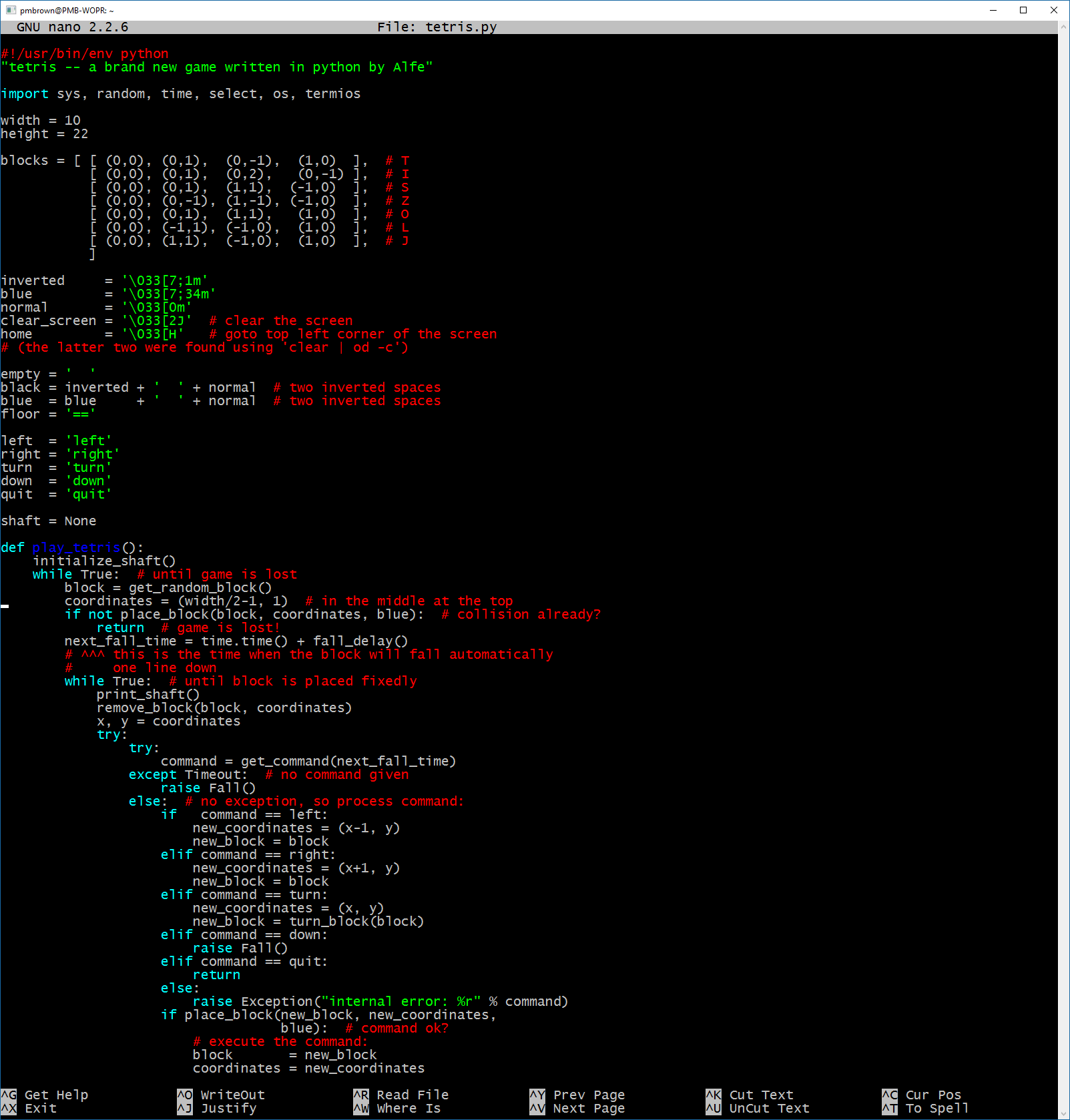
- PRINT FOR BASH SHELL FOR WINDOWS 10 FULL
- PRINT FOR BASH SHELL FOR WINDOWS 10 WINDOWS 10
- PRINT FOR BASH SHELL FOR WINDOWS 10 CODE
Configure a custom shell using PowerShellįor scripts for Shell Launcher v2, see Shell Launcher v2 Bridge WMI sample scripts.įor Shell Launcher v1, modify the following PowerShell script as appropriate. Don't assign the profile to users or user groups. If you wish to upload the xml instead of pasting the content, choose data type String (XML file).Īfter you configure the profile containing the custom Shell Launcher setting, select All Devices or selected groups of devices to apply the profile to. Device/Vendor/MSFT/AssignedAccess/ShellLauncher.įor the value, you can select data type String and paste the desired configuration file content into the value box. (The XML that you use for your setting will determine whether you apply Shell Launcher v1 or v2.) In your MDM service, you can create a custom OMA-URI setting to configure Shell Launcher v1 or v2.

Get XML examples for different Shell Launcher v2 configurations.
PRINT FOR BASH SHELL FOR WINDOWS 10 FULL
When this attribute is set to False or not set, only the custom shell app runs in full screen other apps launched by the user will run in windowed mode. When set to True, Shell Launcher will run every app in full screen, or maximized for desktop apps.

In the XML for Shell Launcher v2, note the AllAppsFullScreen attribute. If v2:AppType is not specified, it implies the shell is Win32 app. The following XML sample works for Shell Launcher v1: įor Shell Launcher v2, you can use UWP app type for Shell by specifying the v2 namespace, and use v2:AppType to specify the type, as shown in the following example. You can use XML and a custom OMA-URI setting to configure Shell Launcher in MDM. Dism /online /Enable-Feature /all /FeatureName:Client-EmbeddedShellLauncher Open a command prompt as an administrator.Įnter the following command. Go to Control Panel > Programs and features > Turn Windows features on or off.Īlternatively, you can turn on Shell Launcher using Windows Configuration Designer in a provisioning package, using SMISettings > ShellLauncher, or you can use the Deployment Image Servicing and Management (DISM.exe) tool. To turn on Shell Launcher in Windows features To set a custom shell, you first turn on the Shell Launcher feature, and then you can set your custom shell as the default using PowerShell or MDM. See the technical reference for the shell launcher component. The app can be your own company application or a common app like Internet Explorer.
PRINT FOR BASH SHELL FOR WINDOWS 10 CODE
Because Shell Launcher is not aware of the newly created wordpad.exe process, Shell Launcher will take action based on the exit code of Write.exe, such as restarting the custom shell.Ī domain, Azure Active Directory, or local user account.Ī Windows application that is installed for that account. Write.exe creates a 32-bit wordpad.exe process and exits. Shell Launcher launches a custom shell and monitors the process to identify when the custom shell exits. For example, you cannot specify write.exe in Shell Launcher. Shell Launcher doesn't support a custom shell with an application that launches a different process and exits. If you do, you won’t be able to deploy the resulting image.
PRINT FOR BASH SHELL FOR WINDOWS 10 WINDOWS 10
Windows 10 doesn’t support setting a custom shell prior to OOBE.

Shell Launcher v1 replaces explorer.exe, the default shell, with eshell.exe which can launch a Windows desktop application. Differences between Shell Launcher v1 and Shell Launcher v2 Starting with Windows 10 version 1803+, you can also use mobile device management (MDM) to apply a custom shell through Shell Launcher. You can apply a custom shell through Shell Launcher by using PowerShell.


 0 kommentar(er)
0 kommentar(er)
